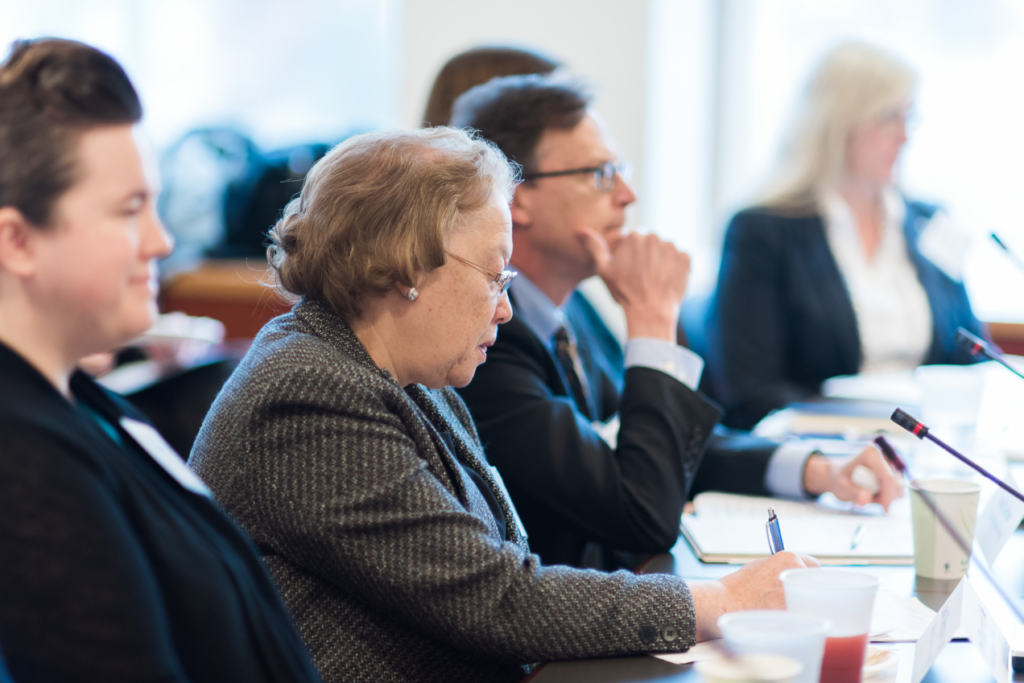
JPMorgan Chase and the Aspen Institute Program of Philanthropy and Social Innovation teamed up recently to study the necessary steps for a stronger nonprofit sector.
Naomi Camper, managing director and head of the Office of Nonprofit Engagement at JPMorgan Chase & Co, and Jane Wales, vice president of Philanthropy and Society and executive director of the Program on Philanthropy and Social Innovation at the Aspen Institute, offer their insight below.
Helping families to build assets and move up the economic ladder. Expanding access to quality affordable housing. Connecting workers to training opportunities and jobs. Protecting the environment.
Nonprofit organizations are working on important issues in cities and towns across the country. They play a critical role in building stronger communities and more inclusive local economies. And yet nonprofits often struggle to find financial resources, consulting, technical assistance and other methods of support so they can sustain high-performing organizations for long-term impact.
JPMorgan Chase and the Aspen Institutes Program on Philanthropy and Social Innovation have teamed up to identify ways we can work together toward a stronger, more sustainable nonprofit sector. A new Action Brief summarizes key findings from a March 2016 roundtable in Washington, DC, hosted by JPMorgan Chase and the Aspen Institute. At that event, Kathleen Enright from Grantmakers for Effective Organizations provided an overview of the challenges facing the nonprofit sector, and 29 national and local capacity building organizations shared their ideas about how the business community can make a difference.
From Challenges to Solutions
Let’s start with the challenges facing the sector. A 2015 survey commissioned by JPMorgan Chase and conducted by The Bridgespan Group set out to identify key areas where nonprofits believe they need more support. Fundraising and communications/marketing topped the list. Organizations were also asked to assess their performance across a range of operational areas. Organizations reported facing challenges in a number of areas, but highlighted volunteer strategy, executive succession planning, technology, and HR management.
So what are potential solutions? First, businesses and foundations should consider looking beyond program funding to invest in organizational infrastructure and capacity building. For some corporate funders, combining organizational support with skills-based volunteerism can be a strategic and efficient approach that leverages the company’s core capabilities and engages their employees. At the same time, the nonprofit – if it is properly positioned – can derive significant value, both financial and otherwise.
Many funders will continue to focus on program support, and that’s fine too. But funders should consider supplementing that investment with nonprofit capacity building elements, which can include everything from consulting support and technical assistance to leadership coaching and board service.
Our Action Brief identifies several considerations for businesses as they think about how to make their capacity-building investments count. These include:
- Align your investments with broader corporate values and priorities
- Reach out to nonprofits to find out what they truly need to increase their effectiveness
- Be careful not to impose your solutions on nonprofits
- Don’t just support the “usual suspects”; invest in smaller, culturally diverse, community-based organizations working in underserved communities
- Seek opportunities to work collaboratively with other funders, government and nonprofit leaders to strengthen the nonprofit sector
Many thanks to the participants in our March roundtable for helping us shine a spotlight on these ideas and issues. In November, we will continue the conversation at a larger convening, and we hope to keep the dialogue going in 2017. We hope you will join us. Together, we can build a more impactful nonprofit sector and stronger communities across the nation.
